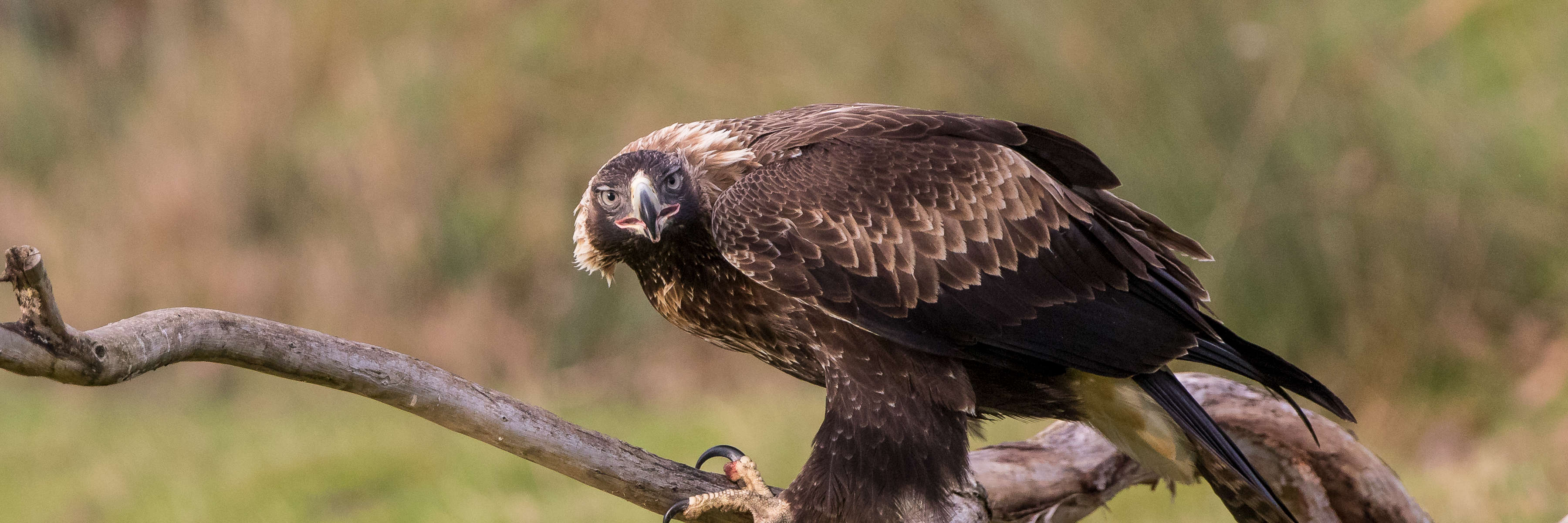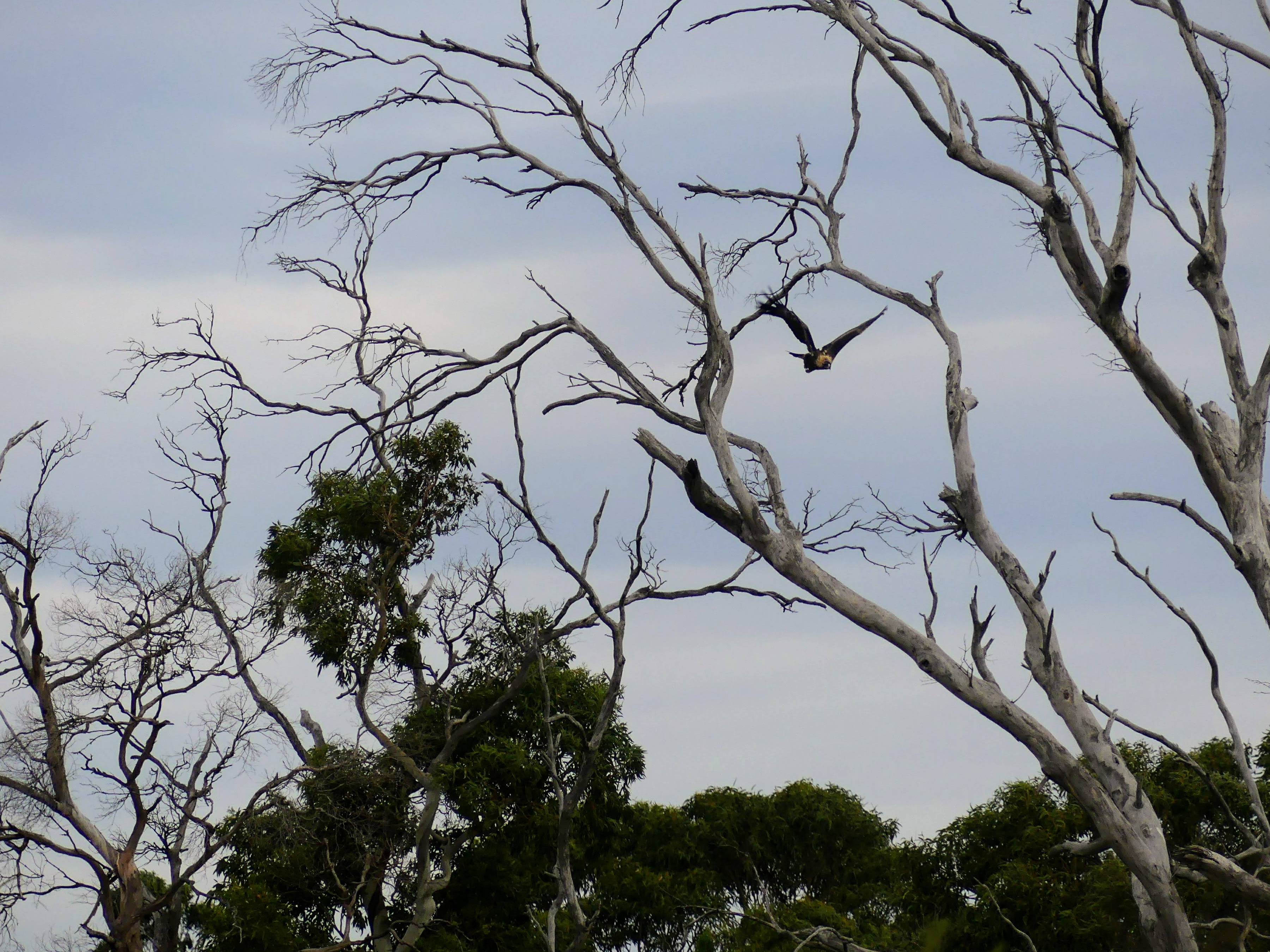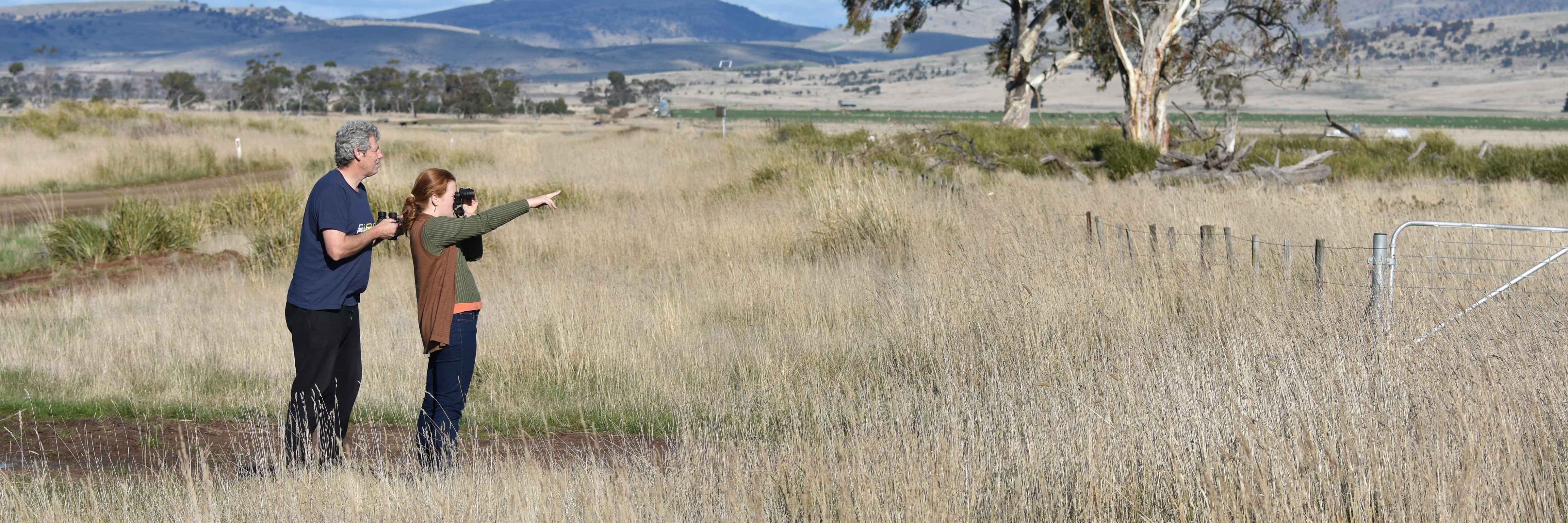GPS tracking young eagles usually involves observing them as they travel great distances. A few months after fledging the nest, young Tasmanian wedge-tailed eagles leave their parents’ territory and spend a number of years flying around the Tasmanian landscape, a process called natal dispersal, until they eventually settle in their own territory. Of the 25 young wedge-tailed eagles we have been tracking, 24 have been flying thousands of kilometres around Tasmania as they disperse. Meanwhile, Ernie the Maria Island wedgie has been reluctant to leave his island home.
We first met Ernie as a 10-week-old eagle nestling in . Ernie had hatched in a large eagle nest (at 2 metres diameter it was one of the largest we visited!) on Maria Island, just north of McRaes Isthmus. Although almost fully grown, he was still confined to his nest as his flight feathers were yet to fully develop. We’d timed our visit so we could safely take some measurements from Ernie and fit a GPS tracker to monitor his movements over the next few years. We also collected samples from his nest to learn more about what eagles eat. Ernie had two particularly unusual items in his nest, a young wombat skull (not a typical prey species for wedge-tailed eagles) and a human sock! Ernie remained on his nest for a few weeks after our visit, until on 2nd February 2017, his GPS tracker recorded his first flight.
After fledging the nest, Ernie stayed with his parents for an especially long time. Once young eagles leave the nest, they stay with their parents in their territory for a period of time whilst they learn how to be an eagle and fend for themselves. Based on information from other eagles, it was thought that most Tasmanian wedge-tailed eagles stay in their parents’ territory for around five months before leaving. But our research revealed something surprising — most eagles stayed much longer, often remaining for over a year in their parents’ territory. Ernie was especially reluctant to leave home, finally leaving his parents’ territory on 16th September 2019, 19 months after fledging his nest.
We were excited to see where Ernie went once he started natal dispersal, and after a few months it became clear that Ernie’s location on Maria Island was causing his behaviour to be quite distinctive. Whilst the other birds were covering thousands of kilometres as they cruised around Tasmania, Ernie was staying confined to Maria Island. We suspect that his island location was causing his unique behaviour. Unlike the other young eagles we are tracking, Ernie had to fly over open water in order to travel larger distances. Wedge-tailed eagles generally don’t like flying over open water, so it is likely that flying the 4–5 km between Maria Island and mainland Tasmania was a daunting prospect for Ernie.
On , after over two and a half years covering almost every corner of Maria Island, Ernie finally made a brave flight to the Tasmanian mainland. Picking a warm clear day with an easterly breeze, Ernie left the south of Maria and touched down near Pine Creek Beach on the east coast of Tasmania. He then travelled inland, spending a couple of months around the Mount Morrison Forest Reserve, before looping back to the east coast and then hopping back to Maria Island for a 30-minute visit. Over the next year Ernie became an expert in flying over water, making three more visits to Maria Island. At five years old, Ernie is currently back on Maria Island and potentially searching for a place to establish his own territory.
Watch an animation of Ernie’s GPS data collected between January 2021 and February 2023:


